CADILLAC DEVILLE 1998 7.G Owner's Guide
Manufacturer: CADILLAC, Model Year: 1998, Model line: DEVILLE, Model: CADILLAC DEVILLE 1998 7.GPages: 386, PDF Size: 22.36 MB
Page 31 of 386
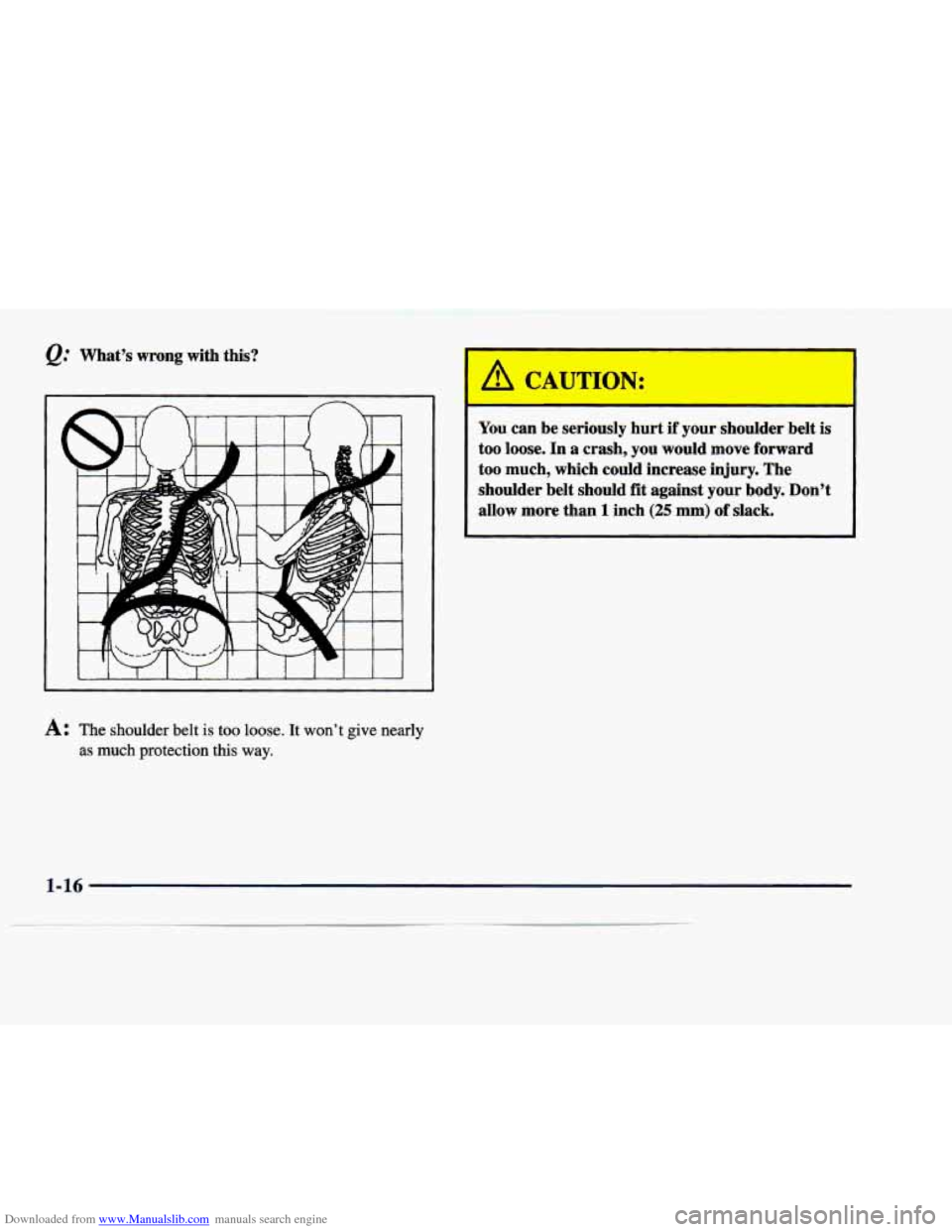
Downloaded from www.Manualslib.com manuals search engine @ What’s wrong with this?
A: The shoulder belt is too loose. It won’t give nearly
as much protection this way.
You can be seriously hurt if your shoulder belt is
too loose. In a crash, you would move forward
too much, which could increase injury. The
shoulder belt should fit against your body. Don’t
allow more than
1 inch (25 mm) of slack.
Page 32 of 386
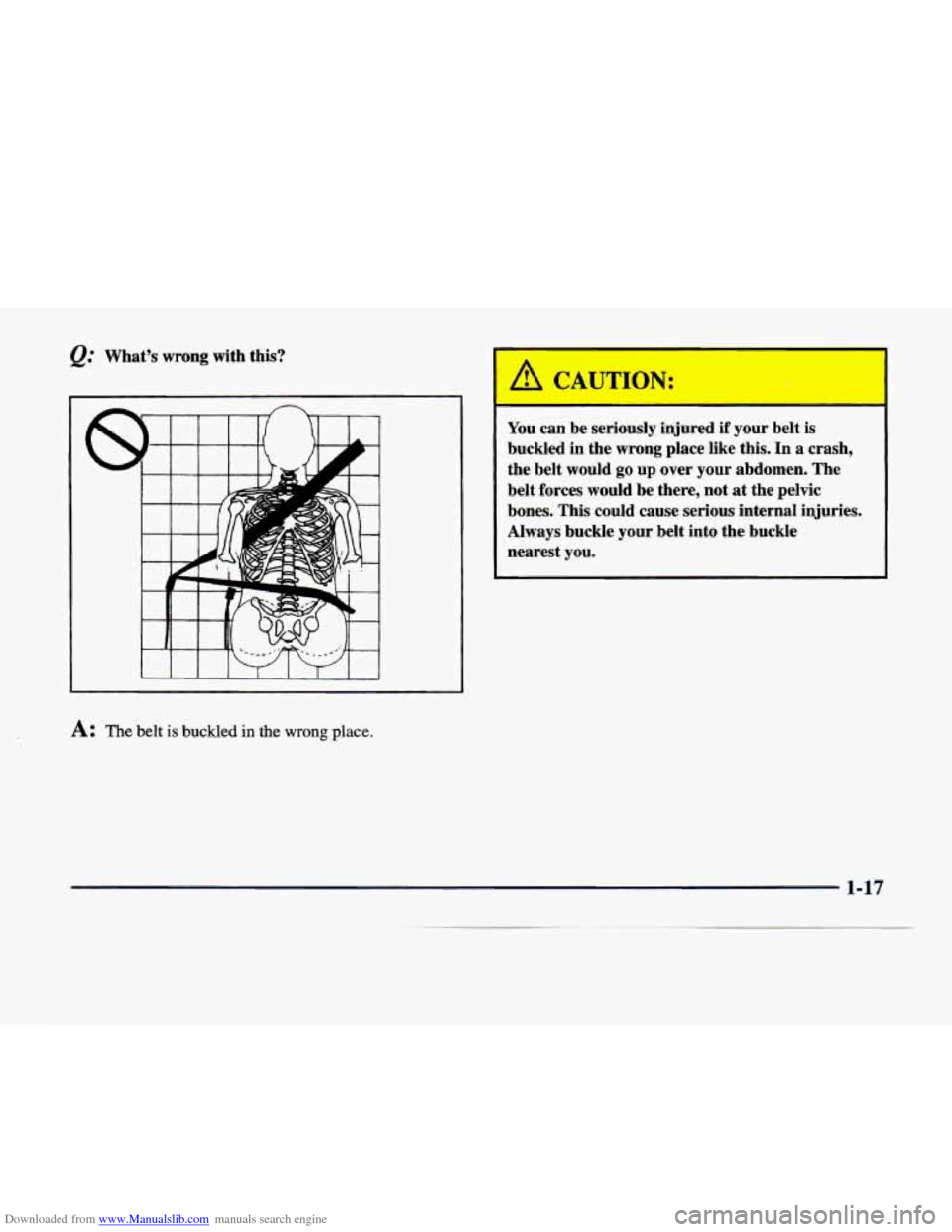
Downloaded from www.Manualslib.com manuals search engine @' What's wrong with this?
A: The belt is buckled in the wrong place,
A CAUTION:
You can be seriously injured if your belt is
buckled in the wrong place like this.
In a crash,
the belt would
go up over your abdomen. The
belt forces would
be there, not at the pelvic
bones. This could cause serious internal injuries.
Always buckle your belt into the buckle
nearest you.
Page 33 of 386
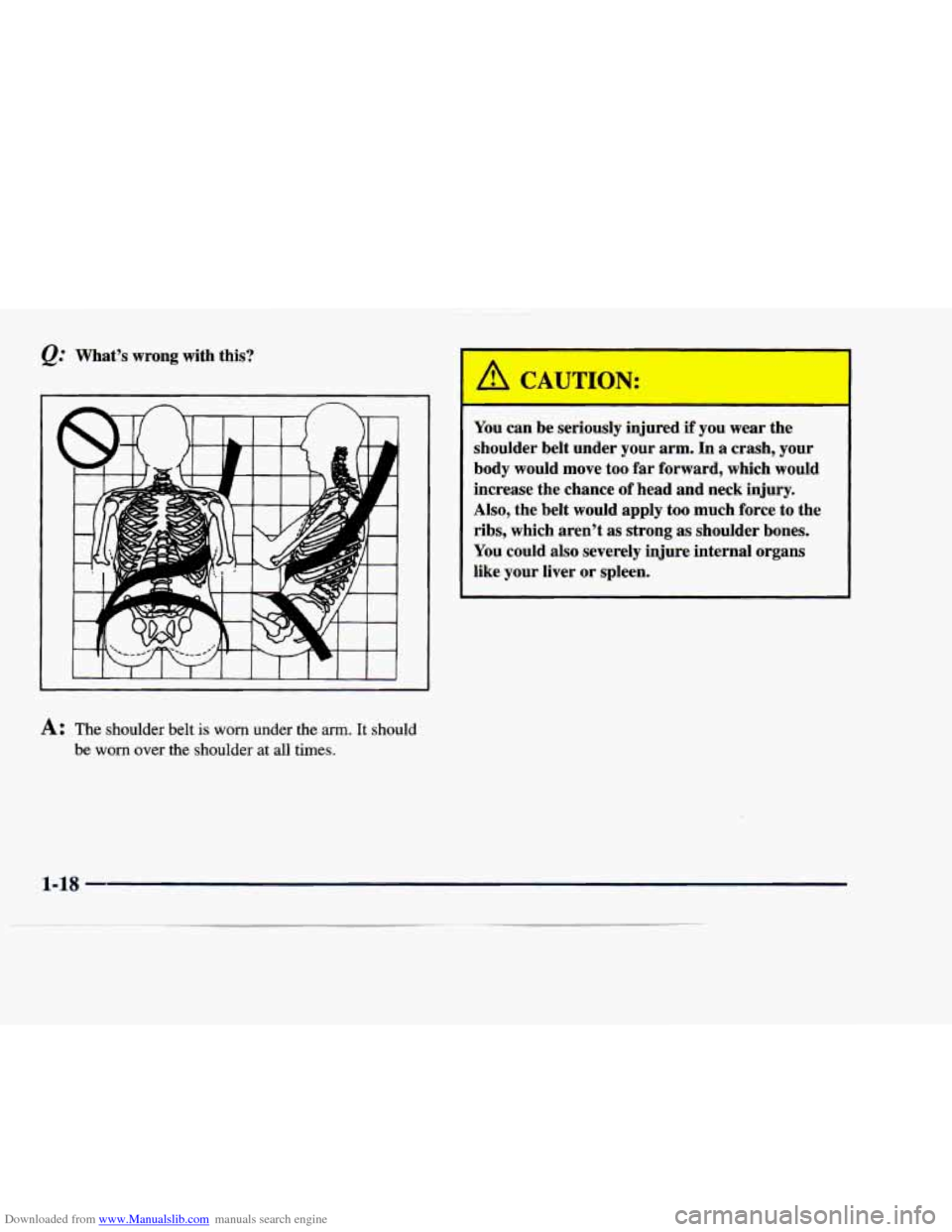
Downloaded from www.Manualslib.com manuals search engine @ What's wrong with this?
A: The shoulder belt is worn under the arm. It should
be
worn over the shoulder at all times. You
can be seriously injured if you wear the
shoulder belt under your arm. In a crash, your
body would move too
far forward, which would
increase the chance of head and neck injury.
Also, the belt would apply too much force to the
ribs, which aren't as strong as shoulder bones.
You could also severely injure internal organs
like your liver or spleen.
1-18
Page 34 of 386
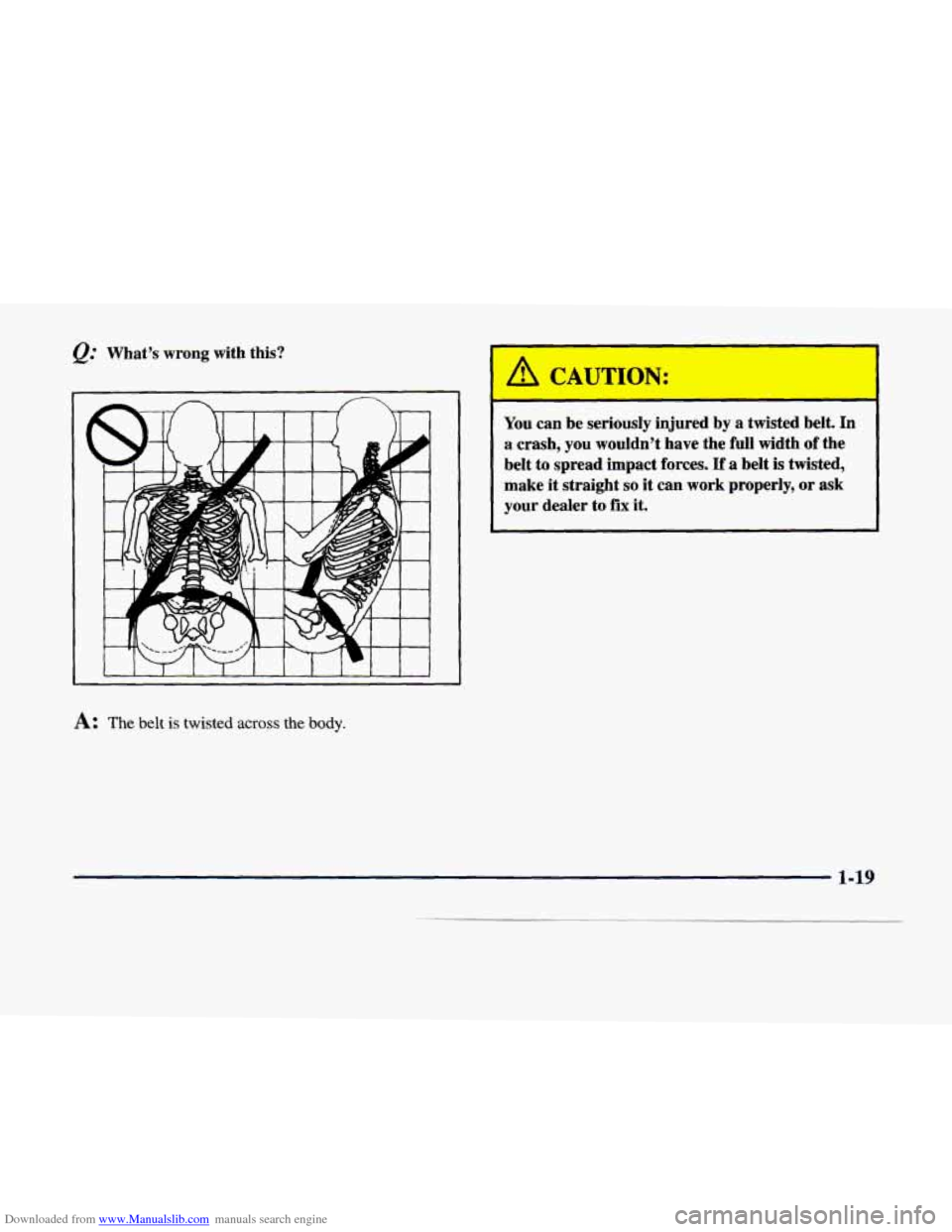
Downloaded from www.Manualslib.com manuals search engine @ What’s wrong with this?
A CAUTION:
I your dealer to fix it.
You
can be seriously injured by a twisted belt.
In
a crash, you wouldn’t have the full width of the
belt to spread impact forces.
If a belt is twisted,
make it straight
so it can work properly, or ask
A: The belt is twisted across the body.
1-19
Page 35 of 386
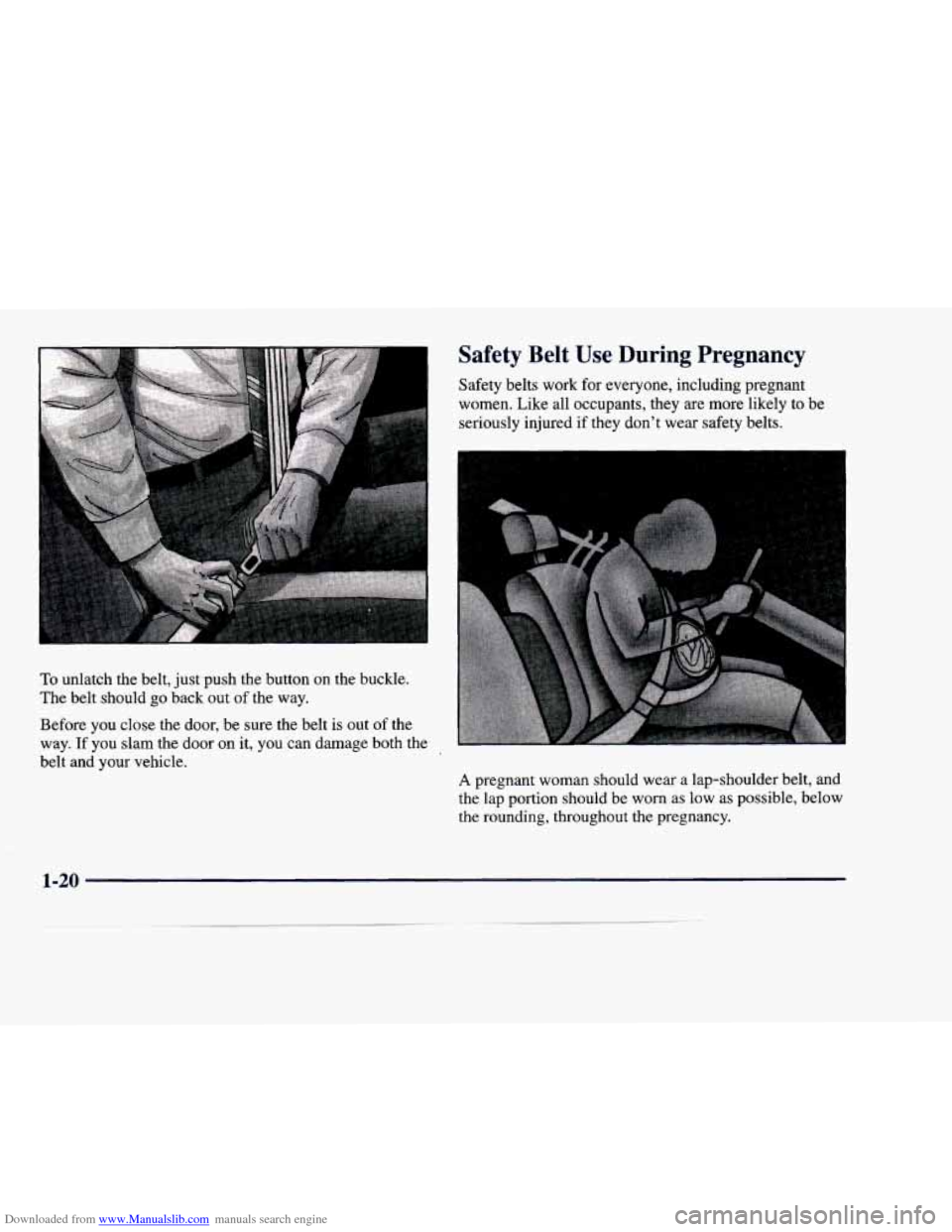
Downloaded from www.Manualslib.com manuals search engine Safety Belt Use During Pregnancy
Safety belts work for everyone, including pregnant
women. Like all occupants, they
are more likely to be
seriously injured if they don’t wear safety belts.
To unlatch the belt, just push the button on the buckle.
The belt should go back
out of the way.
Before you close the door, be sure the belt is out
of the
way.
If you slam the door on it, you can damage both the
belt and your vehicle.
A pregnant woman should wear a lap-shoulder belt, and
the lap portion should be worn as low as possible, below
the rounding, throughout the pregnancy.
1-20
Page 36 of 386
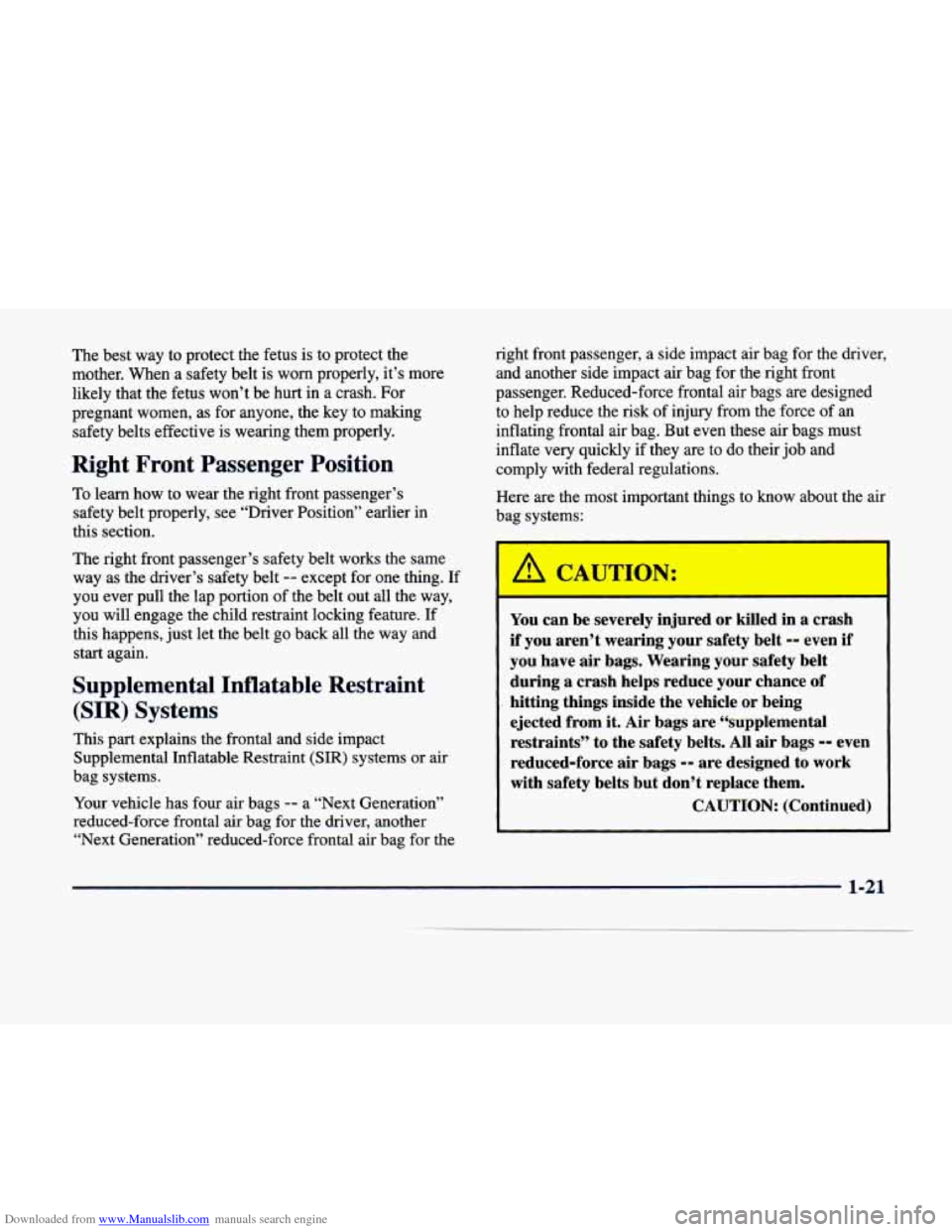
Downloaded from www.Manualslib.com manuals search engine The best way to protect the fetus is to protect the
mother. When a safety belt is worn properly, it’s more
likely that the fetus won’t be hurt in a crash. For
pregnant women, as for anyone, the key to making
safety belts effective is wearing them properly.
Right Front Passenger Position
To learn how to wear the right front passenger’s
safety belt properly, see “Driver Position” earlier in
this section.
The right front passenger’s safety belt works the same
way as the driver’s safety belt
-- except for one thing. If
you ever pull the lap portion of the belt out all the way,
you will engage the child restraint locking feature.
If
this happens, just let the belt go back all the way and
start again.
Supplemental Inflatable Restraint
(SIR) Systems
This part explains the frontal and side impact
Supplemental Inflatable Restraint (SIR) systems or air
bag systems.
Your vehicle has four air bags
-- a “Next Generation”
reduced-force frontal air bag for the driver, another
“Next Generation” reduced-force frontal air bag for the right
front passenger, a side impact air bag for the driver,
and another side impact air bag for the right front
passenger. Reduced-force frontal air bags are designed to help reduce the
risk of injury from the force of an
inflating frontal air bag. But even these air bags must
inflate very quickly if they are to do their job and
comply with federal regulations.
Here are the most important things
to know about the air
bag systems:
You can be severely injured or killed in a crash
if you aren’t wearing your safety belt
-- even if
you have air bags. Wearing your safety belt
during a crash helps reduce your chance of
,. hitting things inside the vehicle or being
ejected from it. Air bags are “supplemental
’ restraints” to the safety belts. All air bags -- even
reduced-force air bags
-- are designed to work
with safety belts but don’t replace them.
CAUTION: (Continued)
1-21
Page 37 of 386

Downloaded from www.Manualslib.com manuals search engine CAUTION: (Continued)
Reduced-force frontal air bags for the driver and
right front passenger are designed to work only
in moderate to severe crashes where the front
of your vehicle hits something. They aren’t
designed to inflate at all in rollover, rear, side or
low-speed frontal crashes. And, for unrestrained
occupants, reduced-force air bags may provide
less protection in frontal crashes than more
forceful air bags have provided in the past. The
side impact air bags for the driver and right
front passenger are designed to inflate only in
moderate to severe crashes where something hits
the side of your vehicle. They aren’t designed to
inflate in frontal,
in rollover or in rear crashes.
Everyone in your vehicle should wear a safety
belt properly
-- whether or not there’s an air bag
for that person. Both
frontal and side impact
air bags inflate with
great force, faster than the blink of an eye. This is
true even with reduced-force frontal air bags.
If
you’re too close to an inflating air bag, it could
seriously injure you. Safety belts help keep you
in
position for air bag inflation before and during a
crash. Always wear your safety belt, even with
reduced-force frontal air bags. The driver should
sit as far back as possible while still maintaining
control of the vehicle. Front occupants should not
lean
on or sleep against the door.
1-22
Page 38 of 386
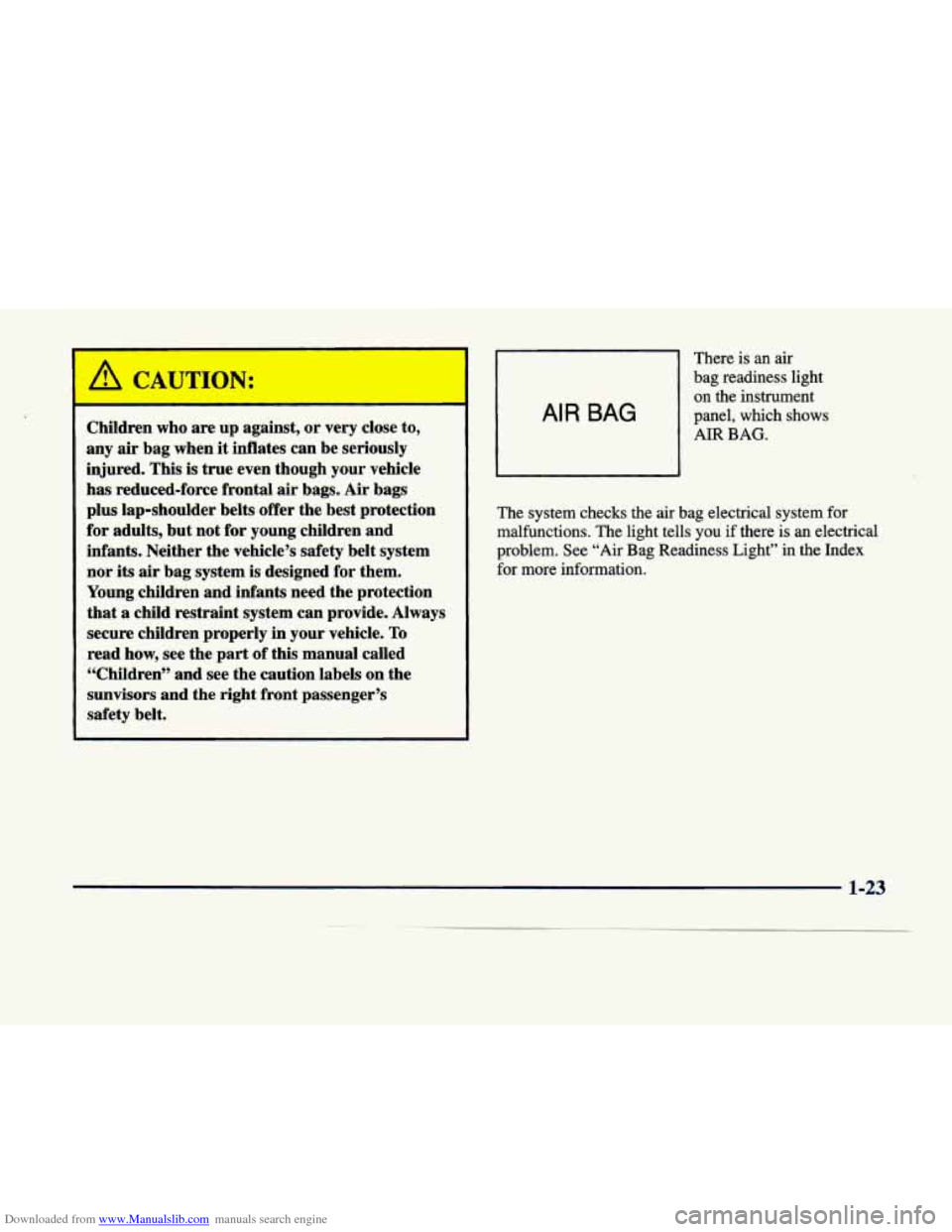
Downloaded from www.Manualslib.com manuals search engine /A CAUTldN:
Children who are up against, or very close to,
any
air bag when it inflates can be seriously
injured. This is true even though your vehicle
has reduced-force frontal air bags. Air bags
plus lap-shoulder belts offer the best protection
for adults, but not for young children and
infants. Neither the vehicle’s safety belt system
nor
its air bag system is designed for them.
Young children and infants need the protection
that
a child restraint system can provide. Always
secure children properly in your vehicle.
To
read how, see the part of this manual called
“Children” and see the caution labels on the
sunvisors and
the right front passenger’s
safety belt.
AIR BAG
There is an air
bag readiness light
on the instrument
panel, which shows
AIR
BAG.
The system checks the air bag electrical system for
malfunctions. The light tells you
if there is an electrical
problem. See “Air Bag Readiness Light” in the Index
for more information.
1-23
Page 39 of 386
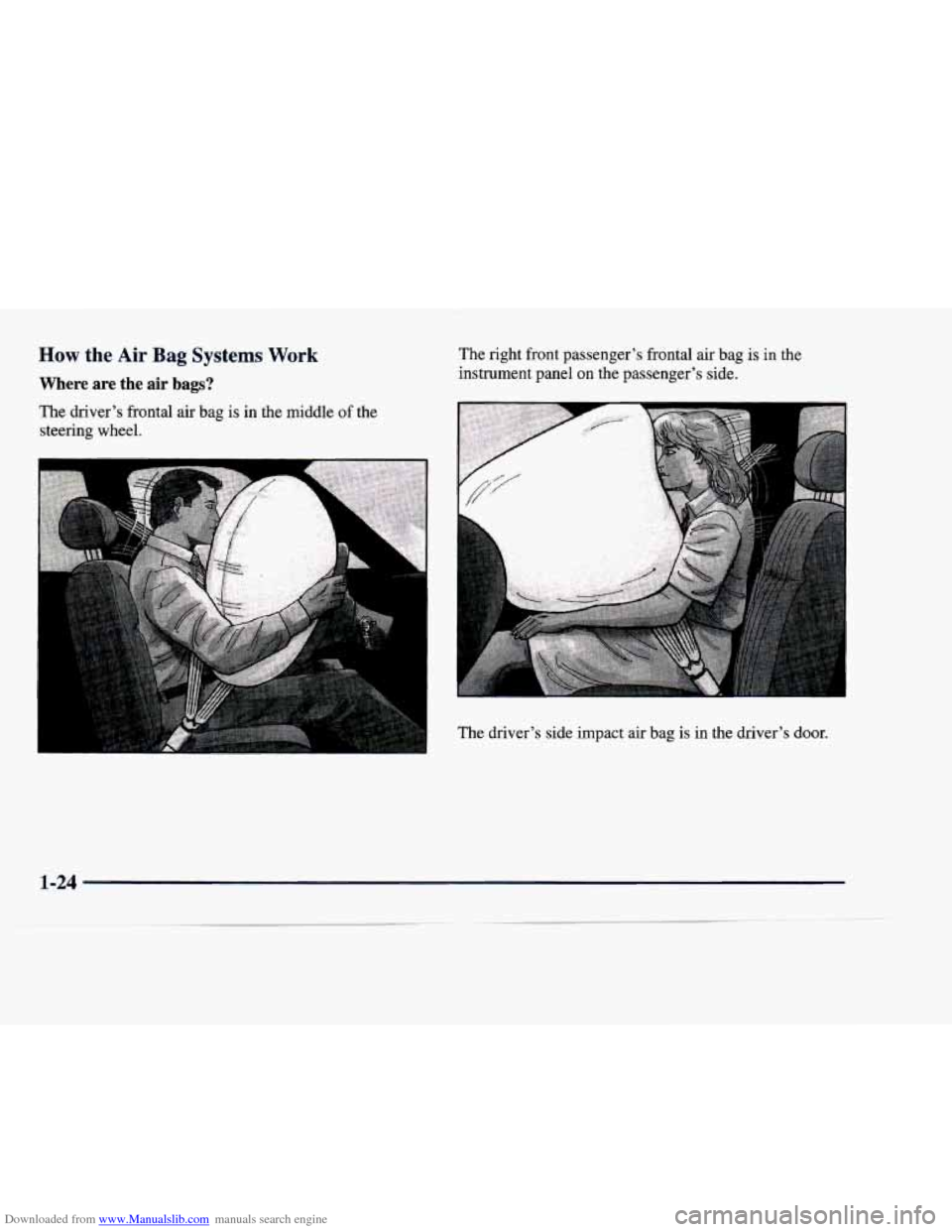
Downloaded from www.Manualslib.com manuals search engine How the Air Bag Systems Work
Where are the air bags?
The driver’s frontal air bag is in the middle of the
steering wheel. The right front passenger’s frontal air bag
is in the
instrument panel on the passenger’s side.
The driver’s side impact air bag is in the driver’s door\
.
1-24
Page 40 of 386
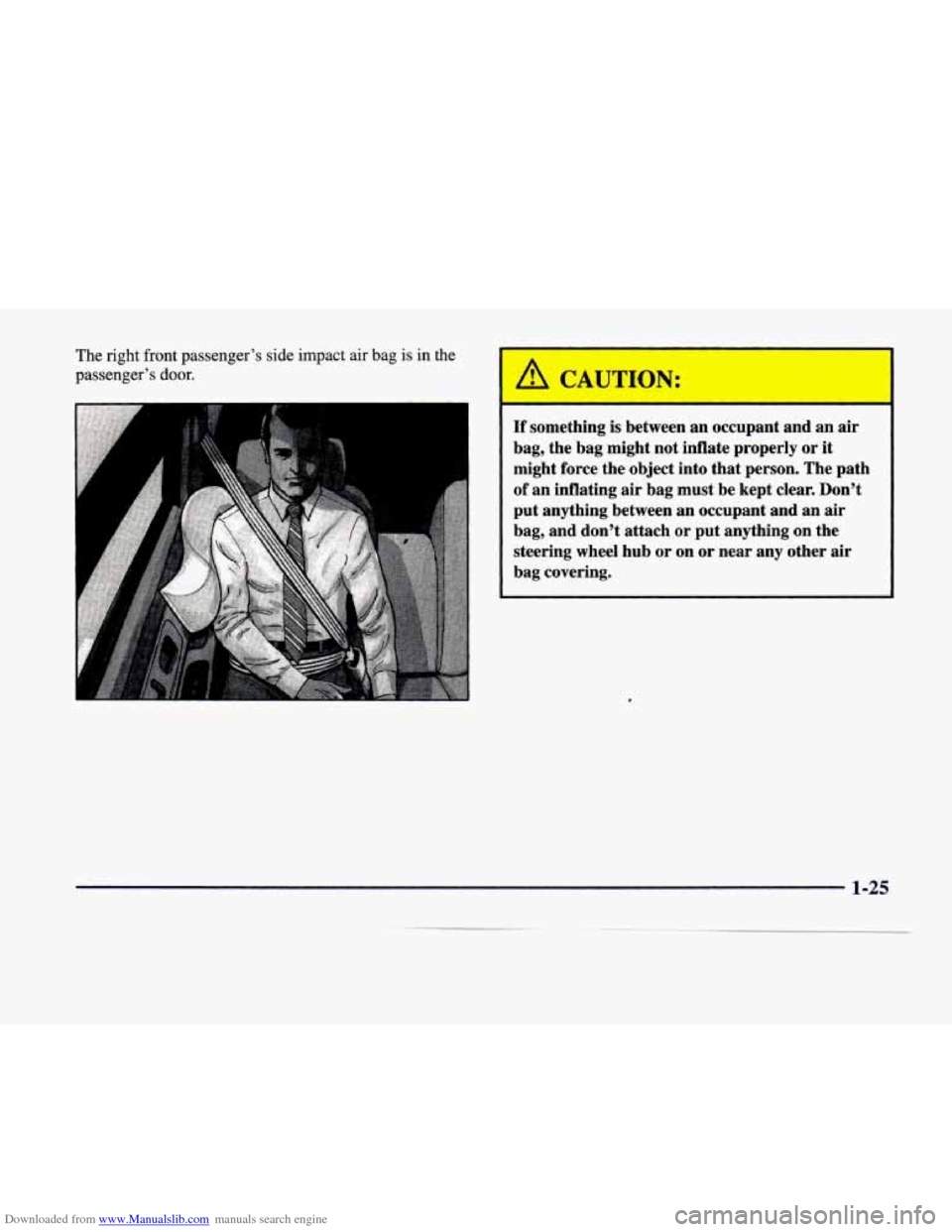
Downloaded from www.Manualslib.com manuals search engine The right front passenger’s side impact air bag is in the
passenger’s door.
If something is between an occupant and an air
bag, the bag might not inflate properly or it
might force the object into that person. The path
of an inflating air bag must be kept clear. Don’t
put anything between an occupant and an air
bag, and don’t attach or put anything on the
steering wheel hub
or on or near any other air
bag covering.
1-25